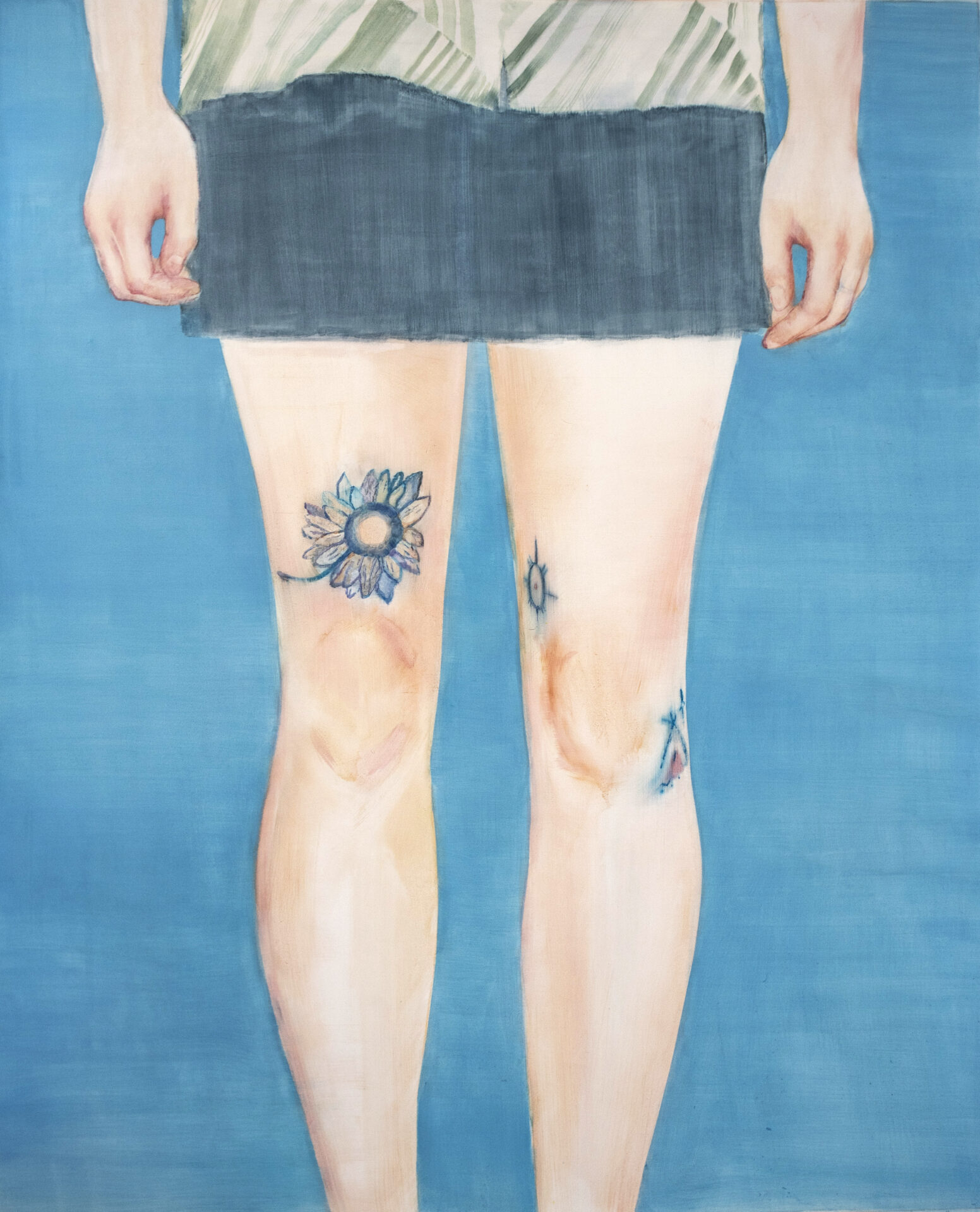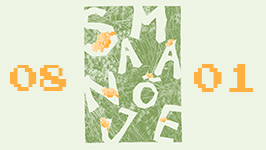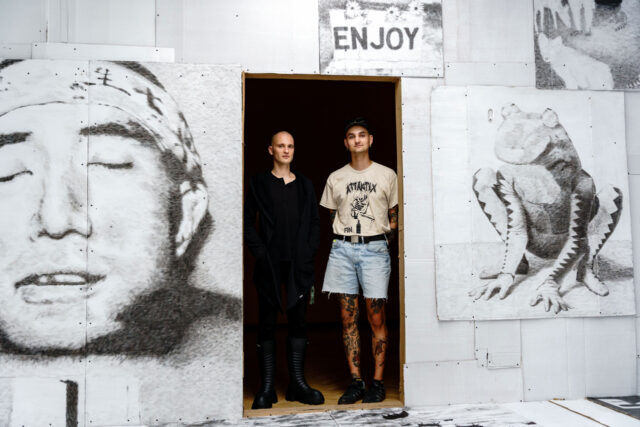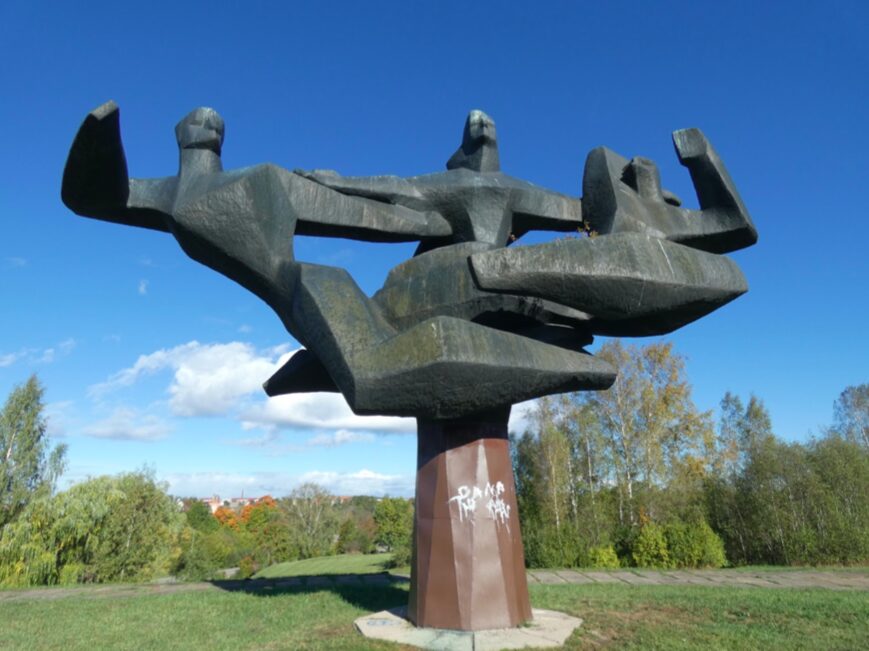On Friday, October 11th, 6 PM, Pranas Domšaitis Gallery of the LNMA will open the exhibition ‘Flower, Fruit, and Thorn Pieces’, which is also adjusted for vision-impaired visitors. The exhibition, curated by Akvilė Anglickaitė, centers on contemporary artwork with a plant theme, inviting visitors to reflect on the role of nature in contemporary art. The exhibition poses the question: Is the theme of nature a form of escape from information overload and ecological threats? It will run through March 2, 2025.
“Art has an immense potential to enlighten, to give the joy of discovery and the sense of the meaning of life. I am very happy that increasingly more individuals can gain this joy of awareness and find inspiring experience at the Lithuanian National Museum of Art, including those individuals whose disabilities restrict them one way or another. I am pleased to be able to invite to this new exhibition ‘Flower, Fruit, and Thorn Pieces’ the people who experience this world differently,” Dr Arūnas Gelūnas, director general of the LNMA welcomes the exhibition with a caring attitude.

Marija Mercelionytė-Paliukė (b.1977), ‘Packed’, 2020, paper, graphite, courtesy of the artist
Fourteen artists featured by the exhibition
“These days when our environment is technology-overloaded as never before, when AI is a constant theme of popular discussion, all of a sudden, blossoms, grass blades, fruit, root and stalks invade the artistic work… These artists on display use images of plants to speak of the present time, with its issues and sensibilities. The stages of plants’ life in these works reflect human experiences and emotions,” exhibition curator Akvilė Anglickaitė says.
The exhibition features fourteen artists: Vitalijus Červiakovas, Uliana Damkiene, Adomas Danusevičius, Tomas Daukša, Vytautas Juozėnas, Gintas Kavoliūnas, Viktorija Makauskaitė, Marija Marcelionytė-Paliukė, Donata Minderytė, Rūta Spelskytė, Varvara Spilt, Marija Šnipaitė, Daumantas Plechavičius and Aistė Valiūtė. According to the curator, these artists subtly trace a fine line that separates and unites these two different fragile worlds, human and natural.

Donata Minderytė, ‘Leg tattoos’, 2020
Visitors to the exhibition ‘Flower, Fruit, and Thorn Pieces’ will encounter a broad and diverse picture of experiences, representing different mind-sets and geographic areas. The youngest participant, the Ukrainian artist Varvara Spilt speaks about war in Ukraine, Marija Marcelionytė-Paliukė in her graphic prints evokes the experience of quarantine, installed centrally is one of Tomas Daukša’s joy fountains, while the photography by the architect and artist Viktorija Makauskaitė features Tokyo fence sides “speaking” in verse.
“These and other many works, despite being so different in the form of expression and ideas, nevertheless converge on one thematic point. This will direct the audience to contemplate what we can say through the shape of a plant, its inner structure, their spreading and function. How a plant serves as starting point to create imaginary worlds, or how the observation of nature and plants brings one closer to earth,” Anglickaitė says.
The exhibition adjusted for vision impaired visitors
The Lithuanian National Museum of Art aspires to create opportunities for individuals with different disabilities and needs to help them to become independent visitors of the museum. The exhibition ‘Flower, Fruit, and Thorn Pieces’ is adjusted for blind and vision impaired visitors. Pranas Domšaitis Gallery offers increasingly more opportunities to experience art adequately and comfortably for visitors with individual and special needs, this exhibition is another step in this direction. The in its entirety is adjusted to vision impaired people,” Skaistė Marčienė, director of Pranas Domšaitis Gallery of the LNMA, speaks of the intent of the exhibition.
According to Anglickaitė, the artists participating in the exhibition seek to increase the inclusivity of the exhibition. „Every participant of the exhibition has considered how their artwork could be presented to blind or weak-sighted visitors of the gallery. It was an addition layer of the display, expanding the field of experience even for those who can see.”

Varvara Spilt (b. 2003), ‘Black earth gestures’, 2024, digitalised film projection, courtesy of the artist
The visual pieces on display are accompanied by sound tracks, which tell the story of the creation of these works, sculpture pieces and objects displayed next to their works are meant to touch.
Curator Akvilė Anglickaitė
Exhibition architect Jurgis Dagelis
Design Marius Žalnieravičius
Coordinator: Aurelija Malinauskaitė, Skaistė Marčienė
Project sponsored by the Ministry of Culture of the Republic of Lithuania
Supported by Focusonics
Partner: Klaipėda Special Education School for the Vision Impaired





























